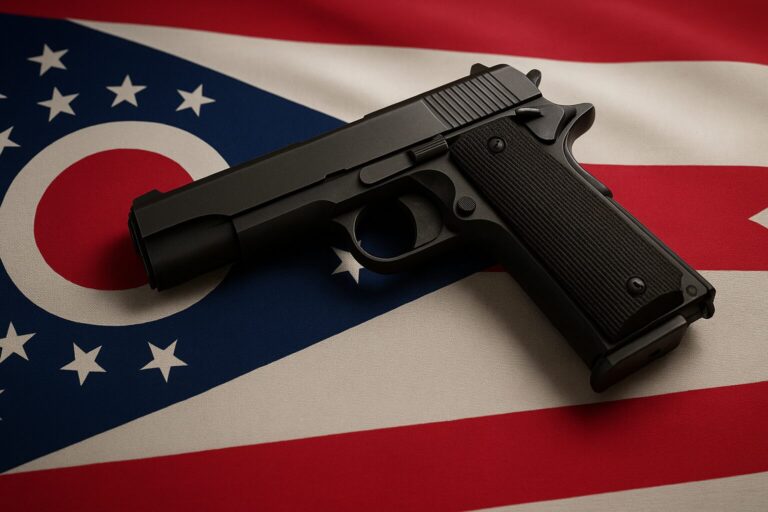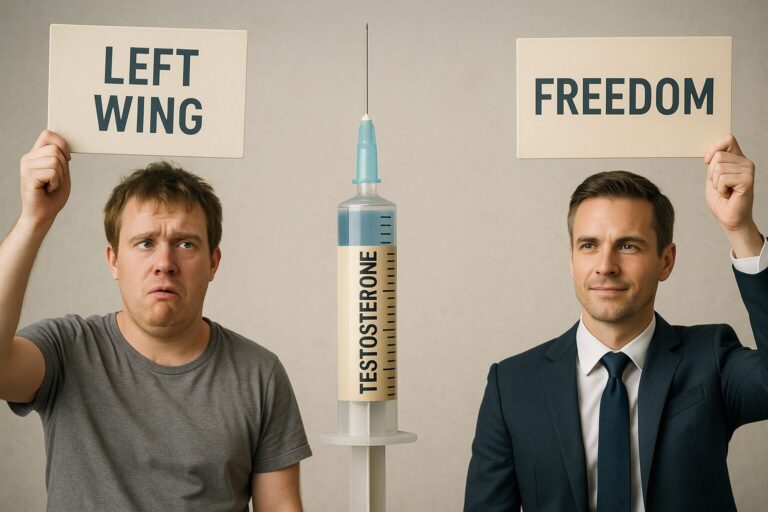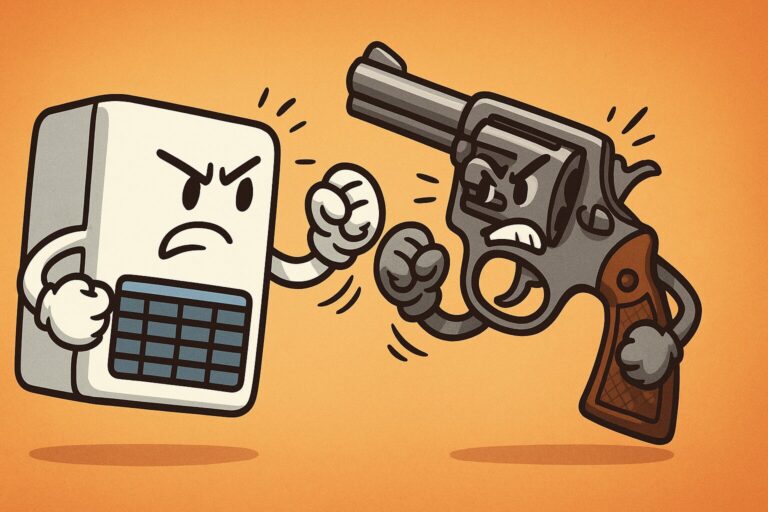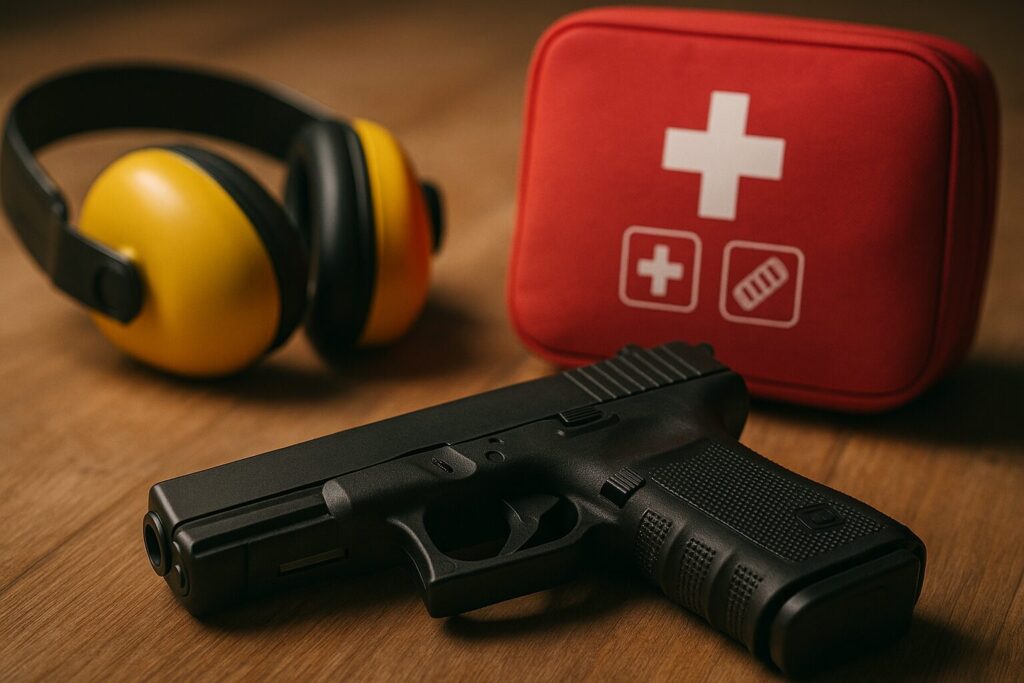
No honest discussion about firearms can ignore the topic of accidents. However, unlike what gun control advocates claim, defenders of freedom do not disregard risk — they simply refuse to accept it as an excuse for tyranny. Firearm accidents are indeed serious, undesirable, and most importantly, preventable. This is a cause for those who value life and understand the responsibility of handling a lethal tool.
The prevailing narrative tries to portray gun rights advocates as negligent, reckless, or insensitive. This is not only unfair — it’s false. The vast majority of legal gun owners in Brazil and around the world follow strict safety protocols and are more aware of the risks than any office-bound bureaucrat. No one who supports civilian gun ownership wants to see children injured or innocent people harmed by mistake. We all deeply regret accidents — but we do not accept them being used as an excuse to strip away our freedoms.
When a gun accident happens, it is usually the result of individual irresponsibility, not the mere existence of the firearm. Like any other powerful tool — a car, a power saw, a gas stove — the risk lies in misuse, not in the object itself. Shifting that responsibility to the state infantilizes society — and infantilizing the people is always the first step toward authoritarianism.
That’s why we must address this issue seriously — without hysteria, without sensationalism, and without generalizations. We must examine the data, understand the true causes of accidents, and propose solutions that respect both freedom and life. That is the purpose of this text: to clarify, defend, and propose — without fear of the truth.
Accidents Are Caused by Negligence, Not by Liberty
The first myth that must be dismantled is the idea that restrictive laws prevent accidents. There is no concrete evidence to support that claim. Countries with extremely strict legislation, like Japan or the UK, still experience firearm accidents — often hidden in the data due to police or criminal involvement. Laws are not magic shields against human error.
Meanwhile, countries with liberal laws and high rates of civilian gun ownership — such as the United States and Switzerland — show a continuous decline in firearm-related accidents, especially in regions with a strong culture of safety and education. What does that tell us? That the problem is not the object, but the behavior. Education prevents more accidents than regulation ever will.
This pattern repeats across nearly all areas of life: traffic accidents still happen despite traffic laws; residential fires still kill people despite fire safety codes; children are still poisoned even with warning labels and restricted products. The failure is in practice, not in permission.
When the anti-gun movement blames freedom for accidents, it adopts a contradictory stance: it assumes people are incapable of responsibility, yet trusts politicians — often embroiled in scandals and incompetence — to decide who can or cannot defend themselves. That’s not just childish thinking — it’s cowardly and dangerously authoritarian.
Firearm Accidents Are Rare — and Comparatively Low
To address this topic honestly, we must look at the data. And the data clearly shows that firearm accidents are statistically rare, especially when compared to accidents with common household items. People are more likely to be injured by stairs, bicycles, pools, stoves, medications, and even cutlery — yet no one proposes banning those items from society.
According to the CDC (Centers for Disease Control and Prevention), in the United States — a country with over 400 million guns — accidental firearm deaths account for less than 1% of all accidental deaths. There are about 120 firearm-related accidental deaths annually, compared to over 40,000 traffic deaths or more than 2,000 choking fatalities. In Brazil, where legislation is stricter, the proportions are similar.
These numbers reveal an inconvenient truth for gun control advocates: the risk exists, but it is relatively low. More importantly, it’s a risk that can be reduced through education — not repression. It is both possible and desirable to reduce accidents without infringing on citizens’ rights.
Moreover, fatal firearm accidents are highly concentrated in specific negligent behaviors: unsecured firearms, lack of supervision with children, or handling weapons under the influence of alcohol or drugs. These are criminal or reckless actions — not the result of legal, responsible gun ownership. And such behaviors are already punishable by law — what’s missing is enforcement, not more legislation.
A Look at the Data: Firearm Accidents in Perspective
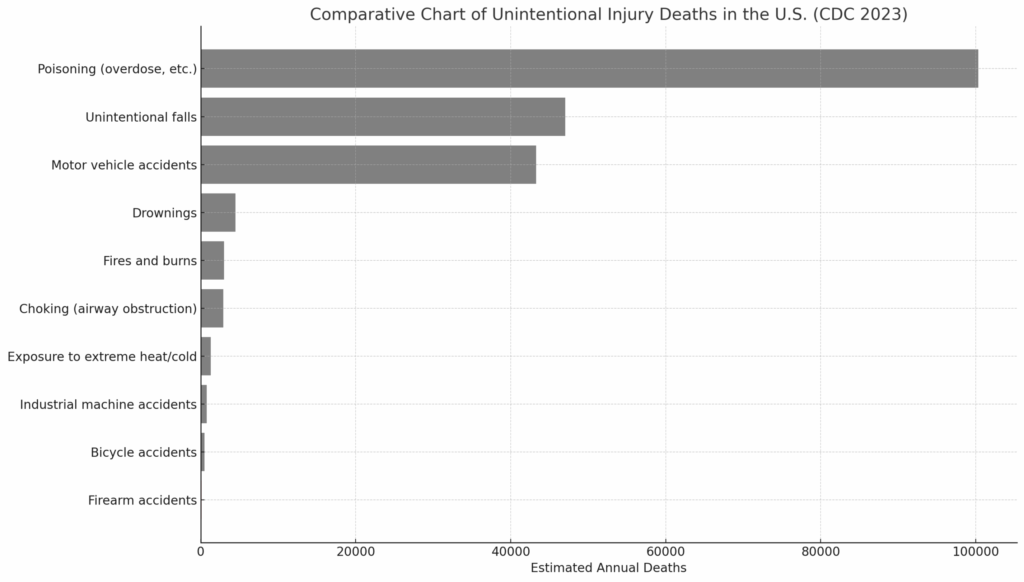
The chart presented gives a broad, comparative overview of the leading causes of unintentional injury deaths in the U.S., based on 2023 CDC data. It clearly shows that the overwhelming majority of accidental deaths result from poisoning (especially overdoses), falls, vehicle accidents, drownings, and burns. These numbers underscore how varied and common everyday risks truly are, regardless of firearm presence.
A central element of the chart is the visual emphasis placed on firearm accidents — shown in red — to highlight how insignificantly they rank within the overall total of accidental deaths. With around 120 deaths per year, gun-related accidents make up less than 0.1% of unintentional deaths in the U.S. Even with more than 400 million guns in circulation, the data confirms that negligent firearm use is rare compared to other everyday dangers.
Another key point: many of the most lethal accidents are not followed by public outcry or extreme regulation. There are no national campaigns to ban stairs, bicycles, or motor vehicles — even though they kill tens of thousands annually. This disparity reveals a deep ideological bias: while firearms are demonized, far more dangerous items are met with tolerance, understanding, and a focus on education.
Additionally, the chart helps us question the idea that more guns automatically mean more accidents. The U.S. has one of the highest civilian gun ownership rates in the world, yet firearm accidents don’t even crack the top 10 causes of accidental death. This suggests that safety culture and training matter far more than sheer numbers. When citizens are respected, educated, and free, they also tend to be more responsible.
In summary, the data makes it clear: gun safety should not be driven by fear or emotional manipulation, but by facts. Supporting gun rights is entirely compatible with accident prevention. And more than that, the data shows that when used responsibly, firearms are among the least likely objects to cause unintentional deaths — contrary to the gun control narrative.
More Guns Don’t Mean More Accidents — and Even If They Did…

The relationship between the number of guns and the number of accidents is not proportional, as some claim. During the expansion of the civilian gun market in the United States — especially between 1993 and 2013 — the total number of guns doubled, while the rate of fatal accidents was cut in half. This means more guns do not necessarily lead to more accidents — it may even be the opposite.
This is because as the number of armed citizens grows, so does the number of trained individuals, the safety culture strengthens, and good examples multiply. Serious gun owners become multipliers of safe practices. In other words: quantitative growth can lead to qualitative improvements in safe gun handling.
And even if, hypothetically, more guns did result in slightly more accidents, that would still not justify sweeping bans. Freedom, by definition, involves risk. A free society is one in which individuals accept the consequences of their choices. The price of liberty is never zero. The alternative is a sterile cage — where nothing can go wrong, but nothing meaningful can happen either.
It’s also important to highlight the positive externalities of civilian gun access. Armed citizens deter crime, reinforce individual sovereignty, enable immediate responses to threats, promote personal responsibility, and reduce dependence on the state. The occasional cost of an accident is far lower than the cost of a disarmed, submissive, and defenseless society.
What Actually Prevents Accidents: Culture, Not Control
The only truly effective way to prevent firearm accidents is to invest in a healthy gun culture. That means high-quality instruction, access to technical content, encouragement of regular training, and the promotion of values like discipline, responsibility, and vigilance — all of which DEFENSE Institute has been doing since its foundation.
That’s why we reject the false dichotomy of “freedom vs. safety.” Safety is only possible through freedom — and because of it. A free citizen is the only one truly capable of protecting themselves effectively. The state cannot — and should not — replace individual judgment. At most, it can offer tools, not decisions.
The role of serious NGOs, competent instructors, responsible shooting ranges, and quality schools is essential in building and maintaining this culture. Just as we learn how to drive, cook, ride a motorcycle, or use electricity safely, we must also learn how to handle firearms with safety. Knowledge is the greatest shield against accidents.
If you believe in life, freedom, and truth — join us. Let’s build a stronger culture. Let’s prepare citizens to be more aware, more capable, and more free. The answer is not fear — it’s responsibility.


